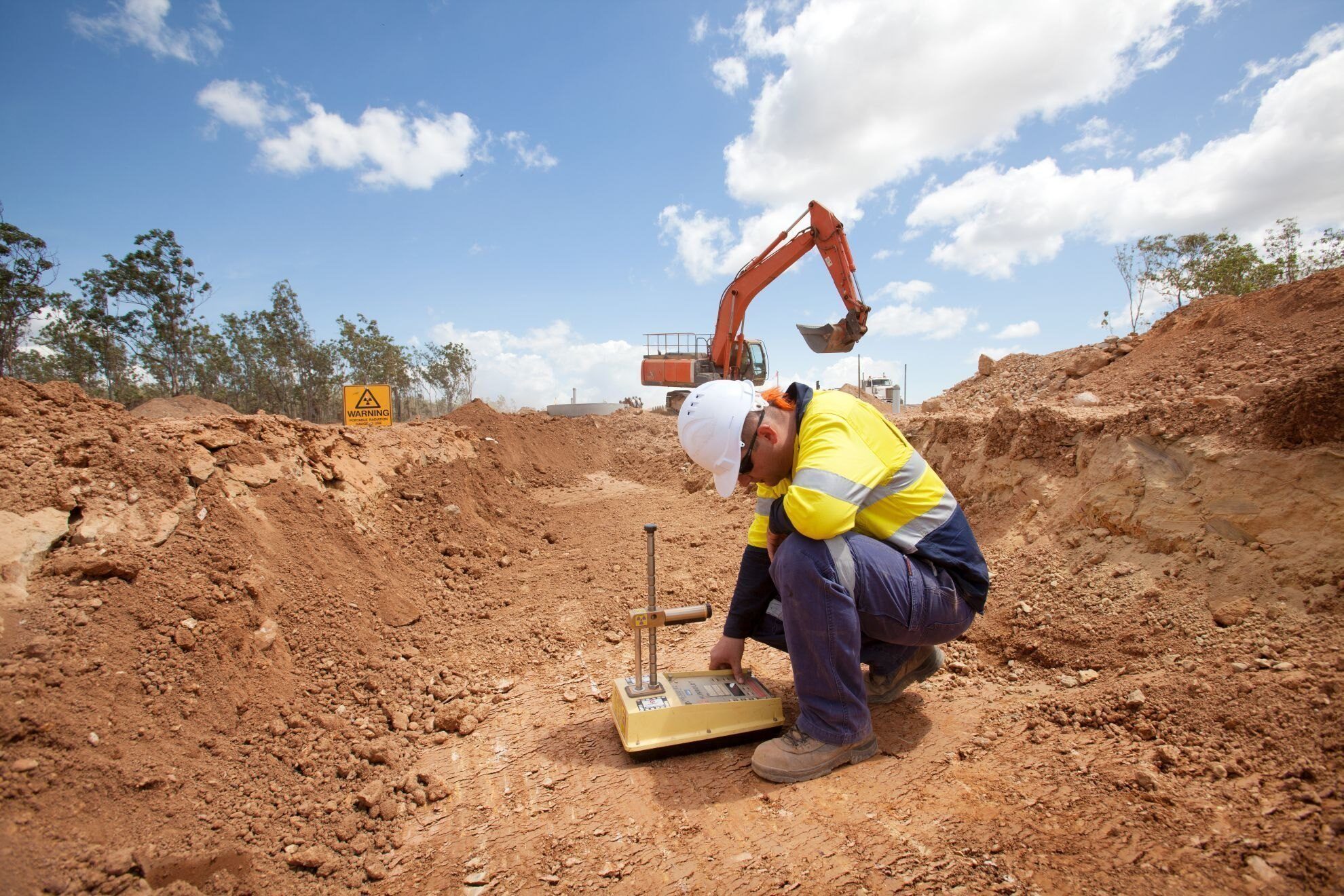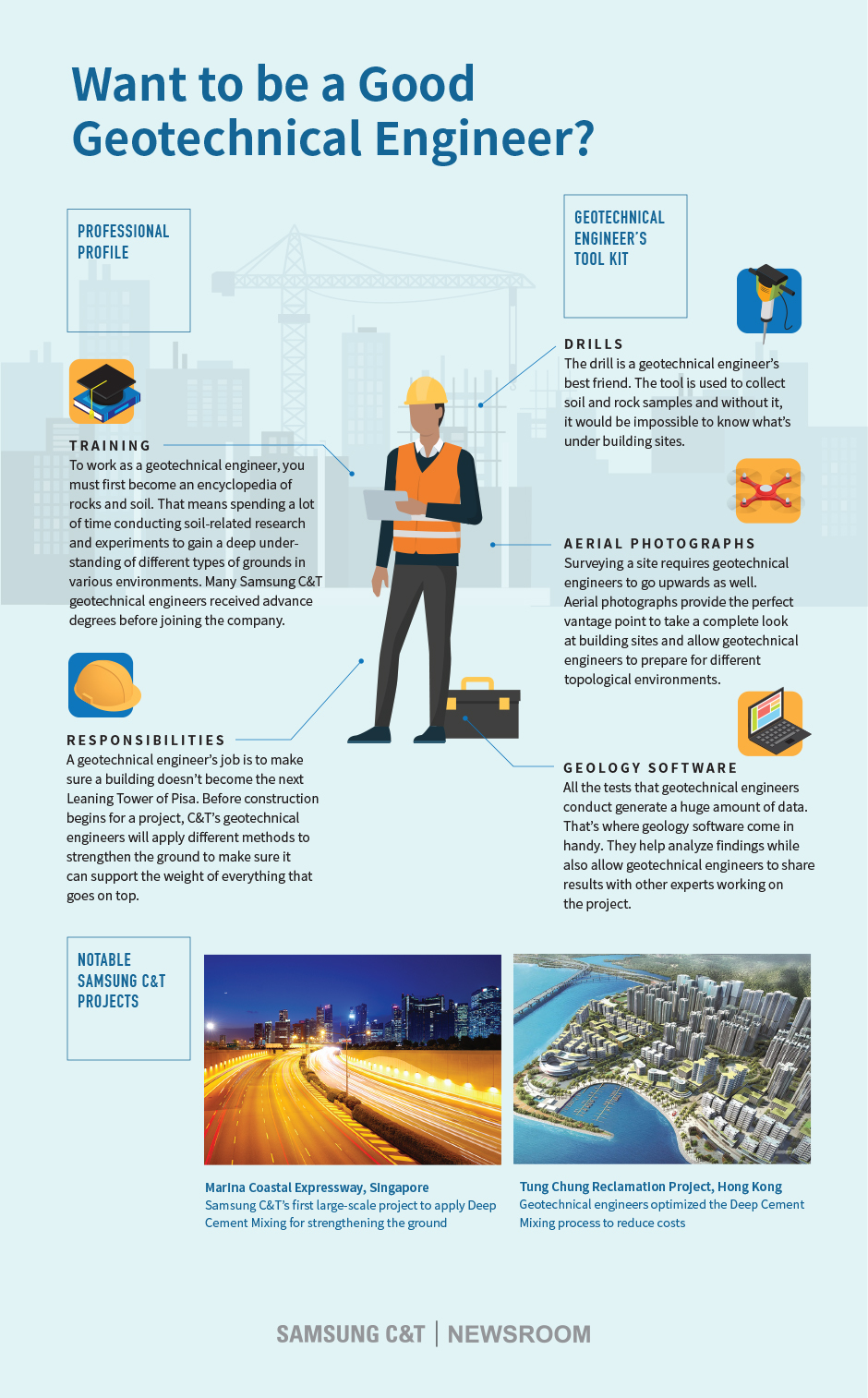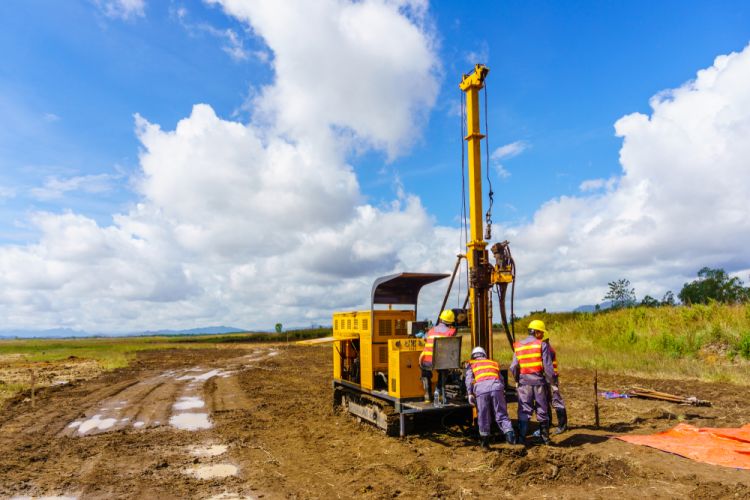Our Geotechnical Engineering For Construction Projects Ideas
Our Geotechnical Engineering For Construction Projects Ideas
Blog Article
The Definitive Guide to Geotechnical Engineering For Construction Projects
Table of ContentsFacts About Geotechnical Engineering For Construction Projects UncoveredThe 20-Second Trick For Geotechnical Engineering For Construction ProjectsThe 25-Second Trick For Geotechnical Engineering For Construction ProjectsThe Basic Principles Of Geotechnical Engineering For Construction Projects Not known Incorrect Statements About Geotechnical Engineering For Construction Projects The smart Trick of Geotechnical Engineering For Construction Projects That Nobody is DiscussingSome Of Geotechnical Engineering For Construction Projects
and Kovacs, W. (1981 ), An Intro to Geotechnical Design, Prentice-Hall, Inc. Deep Scan Tech (2023 ): Deep Check Tech reveals surprise structures at the site of Denmark's highest building. "Geofrost Coring". GEOFROST. Retrieved 20 November 2020. Han, Jie (2015 ). Concepts and Technique of Ground Improvement. Wiley. ISBN 9781118421307. RAJU, V. R.Ground Renovation Technologies and Case Histories. Singapore: Study Publishing Solutions. p. 809. ISBN978-981-08-3124-0. Ground Improvement Principles And Applications In Asia. Pariseau, William G. (2011 ). Style evaluation in rock mechanics. CRC Press. Hegde, A.M. and Palsule P (Geotechnical Engineering for Construction Projects).S. (2020 ), Efficiency of Geosynthetics Reinforced Subgrade Subjected to Repeated Car Plenties: Speculative and Numerical Studies.
Cengage Learning, Stamford, 666 p. Atkinson, J., 2007. The mechanics of dirts and foundations. The Observational Method in ground engineering principles and applications.
Not known Facts About Geotechnical Engineering For Construction Projects
Laboratory and field testing plays a vital role in this procedure. By removing examples from the earth's subsurface and applying a collection of tests, geotechnical engineers can anticipate the practices of soil layers and evaluate their viability for numerous building and construction efforts. The significance of geotechnical engineering in civil engineering can not be overemphasized, attributable to a number of factors: The first action in any type of geotechnical study entails figuring out the dirt kind at the building and construction site.
Recognizing these attributes makes sure that only ideal soil types are picked for the growth, therefore preventing possible structural failings. The foundation acts as the bedrock of any type of building and construction project. Choosing the suitable structure type is a decision that pivots on the comprehensive evaluation offered by geotechnical design. This ensures the durability and stability of frameworks by fitting the loads they will certainly bear.

Geotechnical site examination is an important action in the preparation and implementation of any building task. It entails the collection and evaluation of information associated with the physical buildings of soil and rock under a proposed construction site. This info is important for the style and building and construction of risk-free, steady, and sustainable frameworks.
Our Geotechnical Engineering For Construction Projects PDFs
, additionally recognized as subsurface expedition, entails a series of tasks aimed at determining the dirt, rock, and groundwater problems at a building website. The main objectives are to identify possible geotechnical risks, analyze the design residential or commercial properties of subsurface products, and give recommendations for the style and building of structures, keeping wall surfaces, and various other structures.
The workdesk research study aids in identifying possible geotechnical concerns and planning the subsequent fieldwork. This involves observing the topography, drainage patterns, existing frameworks, vegetation, and any signs of instability or erosion.
The Facts About Geotechnical Engineering For Construction Projects Uncovered
Superficial examination pits are excavated to directly observe and example the soil and rock. This method is useful for researching the upper layers of the subsurface and identifying near-surface hazards. Non-invasive geophysical approaches, such as seismic refraction, ground-penetrating radar (GPR), and electrical resistivity tomography (ERT), are used to map subsurface conditions and detect anomalies.
Soil and rock examples accumulated during the area examination are subjected to lab screening to determine their physical and mechanical residential or commercial properties. These examinations offer vital information for geotechnical analysis and style.
The key advantage of geotechnical site examination is ensuring the security and security of frameworks. By understanding the subsurface problems, designers can design structures and other structural aspects that can withstand the tons and environmental pressures they will certainly be subjected to. This reduces the danger of negotiation, decrease, and architectural failing.
An Unbiased View of Geotechnical Engineering For Construction Projects
For instance, understanding soil qualities can direct the choice of excavation techniques, dewatering methods, and ground improvement steps. This makes certain reliable and risk-free building practices. Geotechnical website investigations are commonly needed by building codes and laws. Sticking to these requirements makes certain compliance with lawful and security standards, preventing potential lawful liabilities and task delays.
This info is invaluable for job managers, engineers, and specialists in developing practical schedules, spending plans, and contingency plans. Geotechnical Engineering for Construction Projects. Skyscraper Building in a Coastal AreaIn a seaside city, a high-rise household building was intended on a site with thought loose sand down payments and a high you could look here water table. A comprehensive geotechnical examination, including borehole boring, CPT, and geophysical surveys, was conducted
Getting My Geotechnical Engineering For Construction Projects To Work
Based on these findings, the foundation style was customized to consist of deep stack structures extending into secure strata, and ground improvement methods, such as vibro-compaction, were carried out to reduce liquefaction risks. This proactive method guaranteed the security and stability of the building while preventing expensive post-construction remediation. Infrastructure Development on a Sloping TerrainA major infrastructure task, entailing the building and construction of a freeway and bridges, was intended on a sloping surface with steep slopes.

The Leaning Tower of Pisa (Italy), a famous architectural wonder, is well known for its unplanned tilt from substantial geotechnical problems. The tower's foundation was inadequately made to manage the soft, unsteady soil below it, leading to irregular negotiation and its distinctive lean. Our globe is dotted with remarkable facilities projectsfrom looming high-rise buildings to sprawling bridgesall standing statement to the development of the various building and construction devices and methods available.
Geotechnical engineering is a customized area within civil design that concentrates on studying the actions of planet materials. This branch digs deep into the groundinvestigating just how the soil, rock, and groundwater at a construction website can influenceand be influenced bythe framework that we erect on and right into them. Before a solitary block is laid or a concrete foundation put, geotechnical designers probe into the earthgathering vital information about the site's soil make-up, rock structure, and groundwater degrees.
The 20-Second Trick For Geotechnical Engineering For Construction Projects

is a tool made use of to evaluate the honesty and load-bearing capacity of stacks throughout setup, leveraging the concept of wave propagation. It enhances construction effectiveness by giving real-time examinations, hence ensuring risk-free and efficient pile foundations. Among the sensible applications of geotechnical engineering entails deciding and executing the appropriate methods for foundation building.
Pile driving stands investigate this site for greater than address the plain act of inserting structural aspects right into the ground. On the other hand, it is a meticulously orchestrated procedure of transferring a structure's load past the less stable soil layers closer to the surfacedown to the much more considerable strata that lie underneath. In the instance of heap driving, take into consideration how geotechnical engineers expertly use this technique to equally disperse the framework's weight.
Report this page